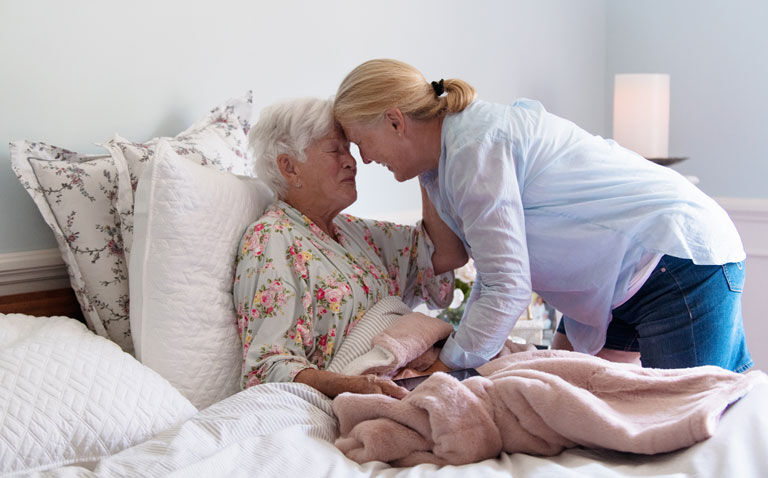Aggressive end-of-life care would appear to be more common among residents within nursing homes compared to those in community dwellings
More aggressive end-of-life care (EOL) has been found to be more prevalent among patients residing within nursing homes in comparison to their community dwelling counterparts according to an analysis by US researchers.
Aggressive or poor quality EOL cancer care measures have been defined to include starting new anticancer therapies or continuation of ongoing treatments very near death, a high number of emergency room visits, inpatient hospital admissions, or intensive care unit, in the days near the end of life. In contrast, better EOL measures include, early palliative care which places an emphasise on managing symptoms, strengthening coping, and cultivating illness understanding and prognostic awareness in a responsive and time-sensitive manner. In fact, it has been shown that early palliative care led to significant improvements in both quality of life and mood, less aggressive EOL care and longer survival.
In the current study, researchers wanted to compare the level of aggressive EOL care care experienced by nursing home residents in comparison to that received by those in community dwellings. The team used a national cancer surveillance database linked to Medicare (a US insurance database) to examine older patients with several forms of cancer. They used claims data to identify the above mentioned markers of aggressive EOL e.g., cancer-directed treatment (such as surgery, radiotherapy or chemotherapy), more than 1 emergency department visit etc.
Aggressive end-of-life care in nursing home residents with cancer
A total of 146,329 patients with a mean age of 78.2 years (51.9% male) were included in the analysis.
Overall, aggressive EOL care was more common among nursing home compared to community dwelling residents (63.6% vs 58.3%, adjusted odds ratio, aOR = 1.04, 95% CI 1.02 – 1.07). This included a higher odds of more than 1 hospital admission (aOR = 1.06) and a 61% higher odds of death in hospital (aOR = 1.61, 95% CI 1.57 – 1.65). In contrast, nursing home residents were less likely to receive cancer-directed treatment in the last 30 days of life (aOR = 0.57) and of enrolling in a hospice in the last 3 days of life (aOR = 0.89).
The authors concluded by calling for multilevel interventions to decrease aggressive EOL care that target the main factors associated with its prevalence, including hospital admissions in the last 30 days of life and in-hospital death.
Citation
Koroukian SM et al. Incidence of Aggressive End-of-Life Care Among Older Adults With Metastatic Cancer Living in Nursing Homes and Community Settings. JAMA Netw Open 2023










